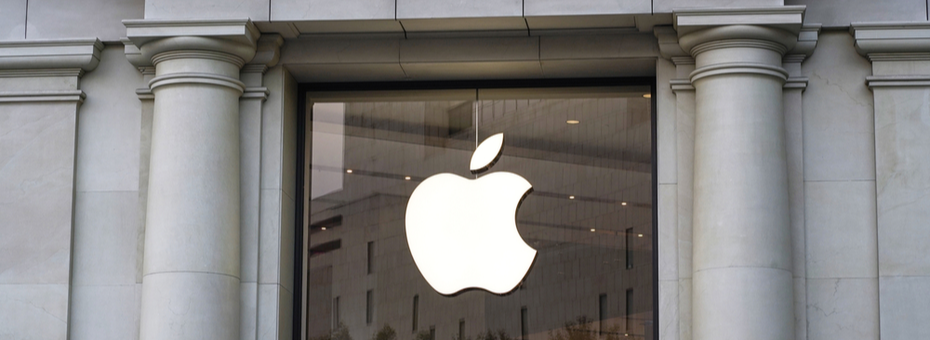Let’s begin by noting that the very question driving this article is fundamentally unanswerable; and I hope to avoid any type of retroactive appellation (Apple-ation?) tied to fixed categories of what comprises “Lean” today. This type of premise too frequently trolls lean followers into an unproductive battle to define and to establish intellectual ownership over Lean Orthodoxy.
That said, here are some core Apple practices that overlap with established lean principles (N.B. this article was researched without (alas, covid) being able to actually visit any meaningful Apple gemba.) Above all, the challenge is to assess how well known Apple practices illuminate best practices that can fairly be called lean.
John Shook tackles this question in his elegy for Steve Jobs:
“Steve Jobs and Henry Ford are important not because of any specific technical invention. Far more importantly, Jobs in his era and Ford in his grasped the social and technical situations of their respective eras so deeply and thoroughly that they were able to integrate product, process, and even business model in ways that were transformative for their customers, companies … even the world. One of Jobs famous quotes was, “Stay hungry, stay foolish.” Never be satisfied, always have fun. Sounds pretty lean to me.
Of course, whether or not Steve Jobs was lean is not an important question. But, how we think about that question may say a lot about what we think lean is.”
Cook has followed the mercurial path blazed by Jobs by methodically multiplying the company’s value with humble yet brilliant improvement.
Note that one of the most significant facts about Apple leadership is that current CEO Tim Cook, who took the reins following Steve Jobs, was trained as an industrial engineer. Full stop. Trained, that is, to be “concerned with the optimization of complex processes, or organizations by developing, improving and implementing integrated systems of people, money, knowledge, information, equipment, energy and materials.” He has followed the mercurial path blazed by Jobs (who I consider one of the greatest innovator/entrepreneurs of the past century) by carefully and methodically multiplying the company’s value with humble yet brilliant improvement.
Since Cook took over in 2011, the company’s revenue and profit have more than doubled, while its market capitalization has soared from $348 billion to just north of $2 trillion. It has more than $80 billion in cash on hand, and has returned nearly $500 billion to shareholders. All while maintaining its dominant leadership in technology, design; and the intersection of the two.
So what’s lean about its approach?
Another key aspect of Apple’s strategy is found in the basic “release and then iterate” approach to its products.
Passionate Intensity About The Small Stuff
For starters, the company is fueled by a passionate intensity about technical minutiae. LEI senior advisor Jim Morgan sees deep resonance with LPPD in this facet of Apple’s approach to developing new products and processes. They are “obsessed with the ability to make things and to integrate that with their design knowledge,” he says. Apple’s famed product design leader Jonny Ive embodied the company’s obsessive desire to understand deeply the technical elements of new products and art of the possible—reportedly visiting a Japanese Katana maker in order to discover “first principle” knowledge to apply to Apple’s challenges with materials such as the metal casing for its laptops. This towering technical competence manifests in the shaping of metal of its iPhones and even the forming of the 47 by 10 feet curved windows in its 2.8 million square foot headquarters in Cupertino, Ca.
Another key aspect of its strategy is found in the basic “release and then iterate” approach to its products. “Incremental is revolutionary for Apple,” says former employee Chris Deaver in a recent WSJ article: “Once they enter a category with a simply elegant solution, they can start charting the course and owning that space.” The company has demonstrated genius in creating new market spaces and then inexporably growing them.
Let’s compare this with a bread-and-butter tactic from Toyota (who, for the sake of argument, can be safely called “lean,”) which has a history of introducing and then methodically improving popular models. As noted in a previous Lean Post article on Kanban as a Learning Strategy, the company developed successive generations of the Corolla much like Apple’s iPhone over the years. While annual adjustments were not always dramatic, the cumulative changes over the years were transformative.
Apple’s “fundamental belief is that those with the most expertise and experience in a domain should have decision rights that domain.”
The company is also notably organized for innovation. This month’s Harvard Business Review features a terrific article by Joel Podolny and Morten Hansen on How Apple is Organized for Innovation. Apple is organized around functions, the authors explain, meaning that expertise aligns with decision rights. Leaders are cross-functionally collaborative and deeply knowledgeable about details. The key here is a philosophy of “experts leading experts” that enables decisions to be made by people who are deeply intimate with product and technical details, as opposed to general managers armed with MBAs.
Decisions, in short, are based on responsibility rather than authority—a key aspect of a lean approach.
Experts Leading Experts
Apple’s “fundamental belief is that those with the most expertise and experience in a domain should have decision rights that domain,” note the authors. This simple truth may seem obvious to anyone who has not earned an MBA, and informs the operating system at lean companies. As noted by John Shook in Managing to Learn, “Lean managers focus on responsibility and ownership, which means keying on ‘doing the right thing,’ as opposed to authority, which deals with who has the right to make certain decisions.”
The disciplined application of this principle has also maintained a relatively effective corps of upper management. The company grew from 17,000 to 137,000 employees from 2006 to 2019, yet the number of VPs during that time merely doubled. Such growth calls to mind a rarely-discussed point about Toyota, which is that it developed innovations such as hoshin kanri as a way to apply lean thinking to the very structure of its managerial apparatus—reducing staff to only what was needed, and helping, say, delaying decisions as a means of making better cars faster.
All of this has resulted in greater (indeed, compounding) value for the customer over time. Okay, with a nod to attribution bias on the part of this unabashed fanboy, I believe that over decades Apple has delivered superior products that have consistently delivered elegant (dare I say lean) solutions to problems both known—and unknown. I have had to forgive the company for its arrogant decisions to abandon perfectly good technologies (farewell optical drive, adieu Lightning port) long before their expiration date, but time generally proves the wisdom of these choices for the user.
In short, the company has thrived with its relentless pursuit of perfection, consistently delivering products that have delighted its customers. Again, spoken as loyal fan. And yet I find this basic fulfillment of an ambitious promise central to the heart of lean.
Virtual Lean Learning Experience (VLX)
A continuing education service offering the latest in lean leadership and management.




